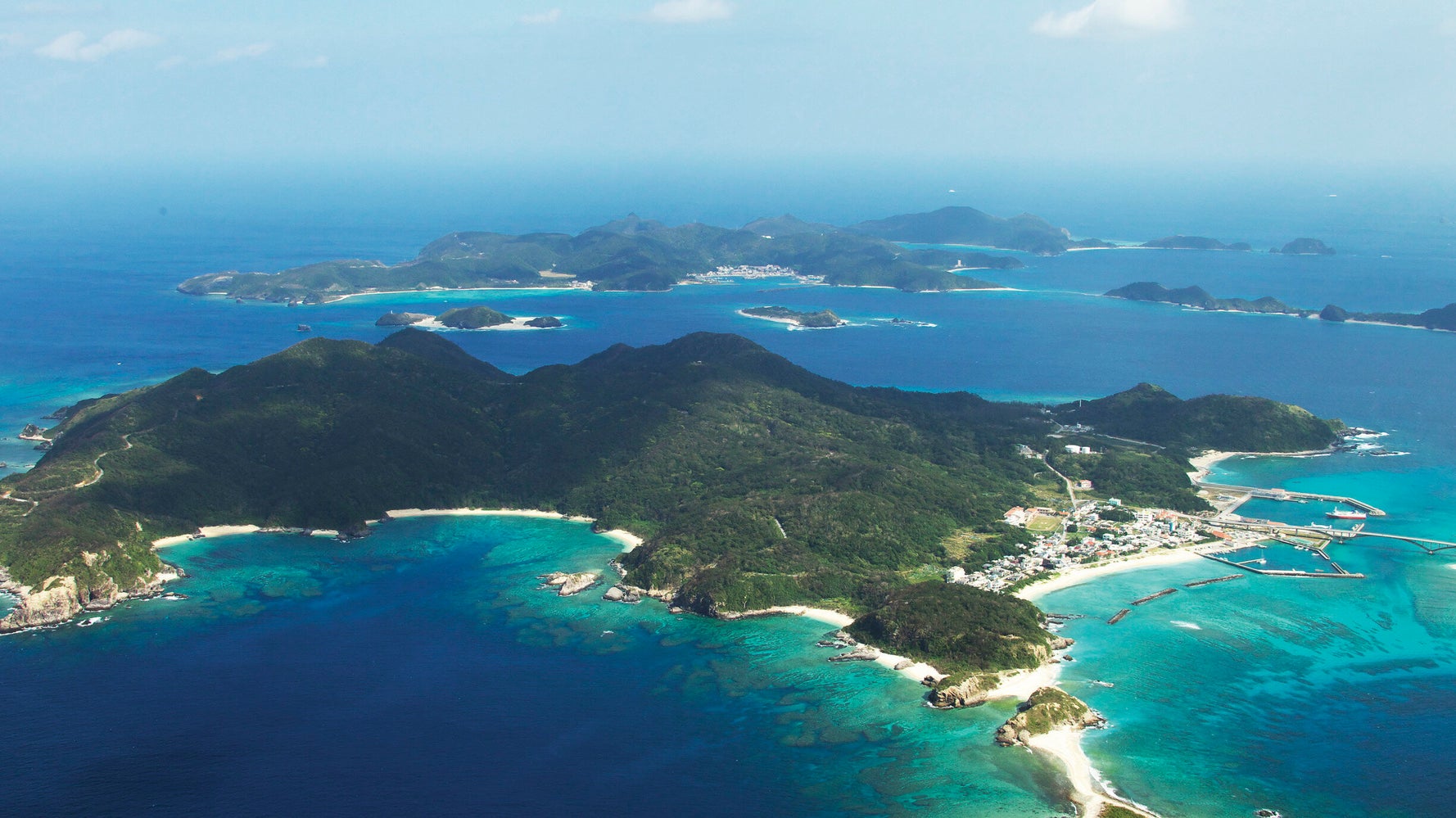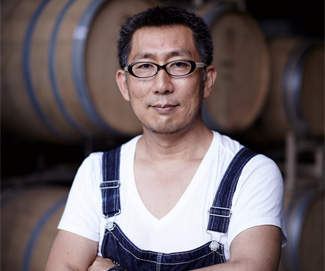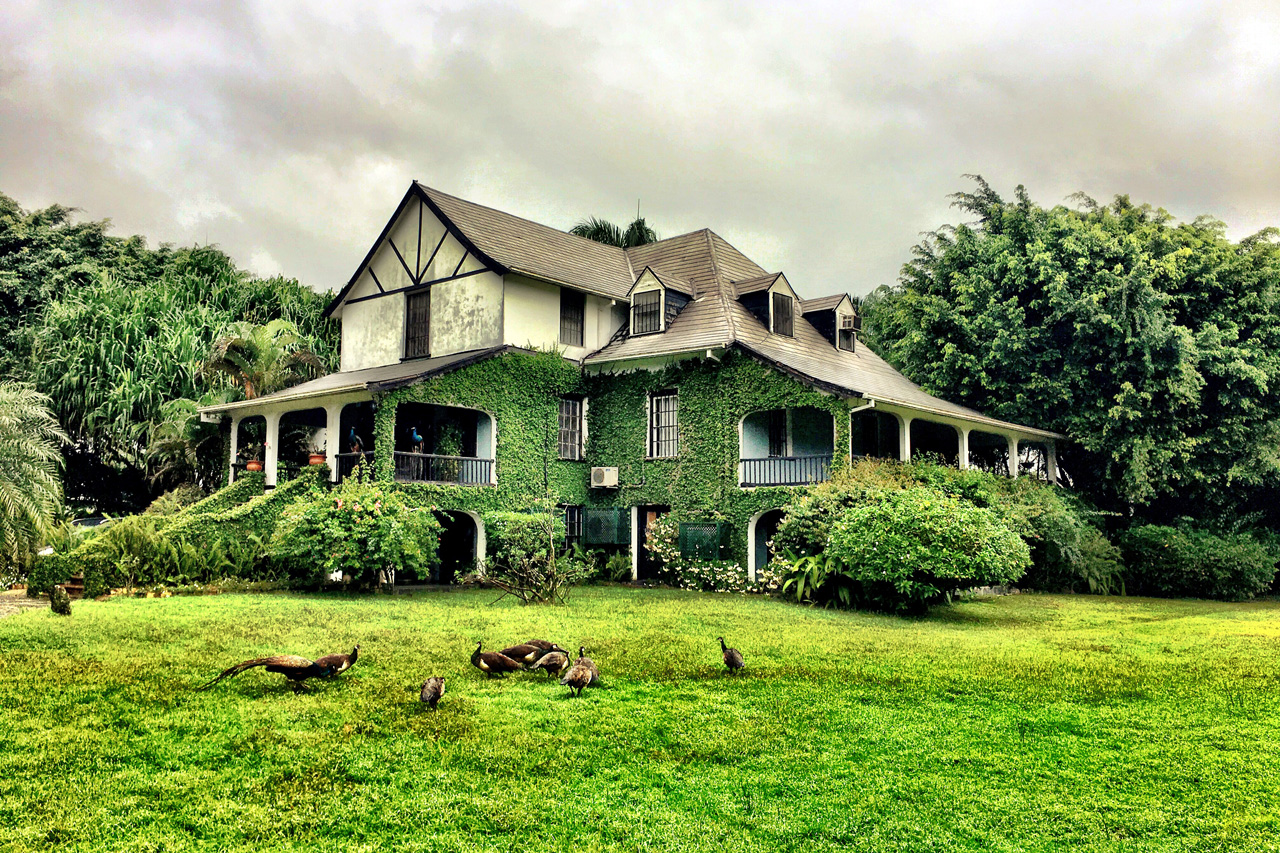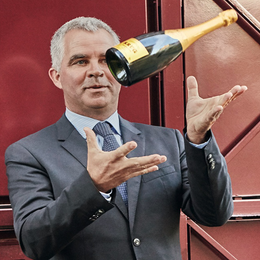Distillery Spotlight: Nine Leaves Rum
Region: Otsu City, Shiga Prefecture, Japan

Okinawa, a scenic island off the coast of Japan, known for its kokuto brown sugar. (Image Source: HuffPost UK)
Japan is known for its rich harvest of bountiful produce - sashimi-grade seafood, the healthiest vegetable crops, the sweetest fruits. It’s almost logic-defying how high quality Japan’s produce is. One reason for this is obviously the incredible ethos of Japanese producers, but yet another lies in the fact that Japan is actually geographically a rather long island. This is all the more unique because the orientation of its length is longitudinal rather than in latitude. This means that its land enjoys a much wider spectrum of types of climate, which in turn enables a wider range of produce that each thrives in its own specific conditions. That’s just two of the multitude of reasons of course.

One of Japan’s well-known produce is sugar from the island of Okinawa, which is considered to be quite special (the brown sugar here is even specially called Okinawan black sugar) because of the way it is made, resulting in a more malty, slightly salty, richer flavor (some even consider it to possess medicinal properties). And where there is sugar, there is… you guessed it, rum.

Okinawan kokuto black sugar is known for its high quality and even medicinal properties. (Image Source: Sakuraco)
Japan is home to a veritable number of rum producers/brands such as Teeda, Cor Cor, Ryoma, just to name some of the ever so slightly more notable producers. Some of them don’t solely produce rum, but also serve other local specialty alcoholic beverages such as Sake or Shochu. But if the means exist, why not put out some rum anyway right?
And while some of them have actually produced quality rums (much of which I’ve tried seem to closely resemble the profile of rhum agricoles), they’ve never achieved considerable recognition or success. It is worth mentioning that most of them tend to agglomerate around Okinawa given the proximity to sugarcane plantations, much as Sake producers circle round the Nada and Niigata prefectures, and Shochu producers tend to gather round the Kyushu prefecture.

Takeuchi-san, the founder and sole employee of Nine Leaves. (Image Source: Single Cask Rum)
The One Man Behind Nine Leaves
It’s then a curiosity that perhaps the most well-known rum producer in Japan is located in the Shiga Prefecture, off of Lake Biwa, nowhere remotely near any sugarcane plantations. It also happens to be a complete one-man show - meet Yoshiharu Takeuchi of Nine Leaves Distillery.

Yoshiharu Takeuchi, a man nothing short of passionate about creating some incredible of his own. (Image Source: The Rum Lab)
But wait, it gets harder. In Japan it is notoriously tricky to acquire and maintain a distilling license, as one would need to produce alcohol to the tune of 6,000 litres annually. That is to say you would not only need a fairly sizeable market to sell to, or an incredibly motivated sales team, you would also need quite a big inventory of raw ingredients and a whole ton of work to produce, age and sell said alcohol to maintain the license. Also, Takeuchi-san lives 1.5 hours away from the distillery’s premises by car, spending most of his time working as the third generation chief of his family’s precision parts business (whose customer includes auto manufacturers such as Toyota).

The absurdly gorgeous Lake Biwa, one of Japan's most famous lakes. (Image Source: GaijinPot Travel)
This man is either a genius or he’s insane. Maybe both. That, my dear reader, is called passion. The very hallmark of passion is that it transcends conventional rationality in exchange for the pursuit of excellence.

A tropical haven, Hampden Estate in Trelawny, Jamaica, is almost antithetical to what you'd expect of a rum distillery in Japan. (Image Source: Fine + Rare)
And something unique you'll come to learn about rums is that unlike say whisky, which is deeply intertwined with Scotland (hence Scotch), there's not as strong a country of origin effect when it comes to rums. Sure, we've come to worship the Demerara's of Guyana, the Hampden of Jamaica, Trinidad's Caroni, and so forth, but really, the rules that apply to rums are far more open to interpretation. The exact form of sugarcane used (cane juice, syrup, molasses, etc.), the type of distillation stills (pot, column, Creole column, double retort, so forth,), the type of yeast, duration of fermentation times, and the cask used for maturation, are all up to one's imagination. It is only to be expected then that this candy shop of a category attracts perhaps the more creative, free-spirited and wild at heart folks.
And it's really only in this arena that you often find folks who'll openly tell you that their original intention was never to make rums or that they basically McGyver-ed their entire set-up, and commonly have never had any prior experience or training making the cane-based spirit.

A bonafide McGyver, Takeuchi-san took all of 3 days of apprenticeship at Chichibu Distillery to figure out how to make his rums from scratch, having no prior knowledge of rums. This is the stuff of rum dreams. (Image Source: Nonjatta)
Takeuchi-san is one in a lineage of such industrious craft producers. As the story goes, he had wanted to venture out of his regular business to create something on his own. This eventually led him to the idea of making his own spirits. Yet, after some assessing, he had come to conclude that making rums would provide him the blank canvas that he wanted, as opposed to the likes of whiskies which were much more strictly regulated. Keep in mind that up until that point, the man had known little to do about rums or even distilling.

Who else would be involved in one of Japan's most promising spirits makers than Ichiro Akuto, the man behind the spectacular Japanese craft whisky distillery, Chichibu Whisky.
A tale as old as time of master and apprentice, Takeuchi-san had come to meet none other than Chichibu Whisky's Ichiro Akuto, as fate would have it. Takeuchi-san would learn much from the legendary craft whiskymaker, who also helped identify the ideal location for where Nine Leaves is now based (more on that later), and would also allow Takeuchi-san apprentice at the Saitama-based distillery for three days. Takeuchi-san had felt that his background in manufacturing would allow him to pick up all he needed to know in those three days (which was also standard practice in the auto industry), and on the advice of Akuto-san, would get to his first task at hand - picking up a pot still from Scotland's premium distillation still maker, Forsyths.

Nine Leaves rum uses a modern interpretation of the Takeuchi family crest, which symbolises nine bamboo leaves, embodying the strong and resilient roots of the bamboo, carrying with it well wishes and good intentions for the generations to come. (Image Source: Nonjatta)
“My wish was to create a finished product that embodies my thoughts and creativity, fully produced within the reach of my eyes.”
- Yoshiharu Takeuchi, Founder of Nine Leaves Rum
This was to be the beginning of 2013-founded Nine Leaves Rum. If you're wondering, the name actually comes from Takeuchi's family crest which features nine bamboo leaves, which itself was modified to become the logo of the craft Japanese rum. The crest itself, also known as Kamon, carries the well wishes and good intentions, with the hopes of continuing the tradition for generations, much like the bamboo it stylises, whose roots are strong and at the same time strengthens the properties of the soil it grows on, resistant to harsh weather and indifferent to hot or cold temperatures.
The Ingredient List: Japan Edition
For starters - the water. Takeuchi had enlisted the guidance of Ichiro in selecting the spot where he would base Nine Leaves Rum, and unlike the stable of Japanese rum producers encircling Okinawa, the duo had deemed that quality of water was more important. As it was unfeasible for Takeuchi to singlehandedly farm and harvest his own sugarcane, and unlike other Japanese rum producers who were also in the business of processing and selling Okinawa brown sugar, proximity to the cane fields was less consequential.

Ishiyama mountain, once mined for specialty porcelain glaze, later turned out to possess an underground spring of unusually soft and pure neutral water. (Image Source: Nonjatta)
After some searching, they had landed upon a small mountain known as Ishiyama by the locals, near the South Basin of Lake Biwa, along the Seta River, in the Shiga Prefecture.
The mountain itself is owned by a family who were once in the business of mining it for feldspar, which was once used for a local specialty porcelain glaze, known as noritake. However, as cheaper porcelain began to come out of China, this business started to fade. Thankfully, the family happened to discover that deep below the mountain was a water spring that produced exceptionally soft and pure water. The family then moved to get into the business of bottling and selling the water under the Iwashimizu brand name.

It took more than a year, but Takeuchi-san was set on basing Nine Leaves around a spot that had access to the best quality water. (Image Source: Nonjatta)
When Takeuchi-san had gotten to it, it actually took him more than year to convince the local community that the distillery's operations would not create any negative externalities on the surrounding natural environment.
In trying to keep things as local as possible, Takeuchi-san came to find a Japanese sugar cane producer from Tarama-jima, a small island that lies cusped between Miyako and Ishigaki in the Okinawa archipelago. While rum production is fairly open to interpretation, this particular aspect became a key area in which Takeuchi-san had sought to express his own personal preferences, opting to use brown sugar (or muscovado, or locally known as kokuto) rather than the usual molasses, cane juice or cane syrup.

Through some good fortune, Takeuchi-san came to find a supplier of kokuto from Tarama-jima, from the Okinawan archipelago. (Image Source: Nonjatta)
Takeuchi had hoped to do away with what he felt was unwanted bitterness or off-flavors that came together with sugar cane juice or molasses, while also enhancing the the clear, refined sweetness and lingering taste that he had desired. This is what will later explain Nine Leaves' rums' unique profile that balances both heft and at the same time light grassiness.

The fermenting wash made uniquely of a brown sugar base. (Image Source: Nonjatta)
With the water and the cane settled, locally-sourced baker's yeast is finally added, with fermentation times at around 4 days, aligned to that of rhum agricole techniques. The wash is then distilled in self-assembled pot stills from Forsyths - a short, fat wash still that mirrors that of Chichibu Distillery's own, and a tall, slender spirit still that incorporates a small boil-ball, which is akin to what is used at Glenmorangie Distillery.

The distillery is about as big as can be seen with one eye. Yet magic happens here whenever Takeuchi-san brings it roaring to life. (Image Source: Nonjatta)
At the distillery, stainless steel washbacks are used, a deviation from Chichibu Distillery where he received his training where wooden washbacks are used. This was influenced by his observation that Scottish distillery Glenfarclas had used stainless steel washbacks and could still make great whiskies, which would be a huge ease off his back given the heat and humidity in the Shiga Prefecture, which would wrecked havoc on wooden washbacks.

Sincerely made, rum from Japan. (Image Source: Nonjatta)
Sincerely Made, Rum from Japan
That's the tagline Takeuchi-san chose for Nine Leaves Rum, which should tell you alot about what the man is going for - keeping things craft and local.
With the ingredients all locally sourced, it's time to make some rum.

A primarily one-man show, rum distillate only flows when Takeuchi gets to the distillery's premises. While keeping his day job at his family's auto precision parts business, Takeuchi-san will typically make an hour and a half's drive from Nagoya to Shiga Prefecture. Once there, he'll kickstart a new cycle of production, getting to work processing the brown sugar or kokuto, initiating the fermentation process and rolling out distillation, emptying the stills of spent lees and getting the distillate into casks for maturation or white rum bottled under Nine Leaves' "Clear" label.

White lightning in the making. (Image Source: Nonjatta)
Depending on how much work he is able to get done at the little craft distillery, Takeuchi-san will either drive back home after a day's work or stay for the night on the distillery's compound. When things get a little more busy at the auto parts business, the distillery can stay closed for days until Takeuchi-san is back to start another round of production.

Staring down into the pot still. A Forsyths, obviously. (Image Source: Nonjatta)
With a keen focus on the second distillation, it's been well understood that Takeuchi-san displays a flair for making the cuts for the the distillate to be taken for use in what goes into the final bottling of Nine Leaves' rums. He is known to be meticulous yet intuitive when it comes to selecting the distillates to be used, remarking that the home cooked food he enjoys are what is responsible for his fluency when it comes to his nose and palate. When distillation takes place, the first distillate to come out of the distillation stills, known as the heads, is typically discarded along with the last of the distillate to come out of the stills, known as the tails, as they tend to be inconsistent or not the best quality, with too much undesirable feints.

"It's not rocket science", says Takeuchi-san, who is said to possess a natural flair for selecting distillates. (Image Source: Nonjatta)
Much like how you need to get an engine warmed up and humming a good, harmonious tune for it to operate at its best, the same goes with choosing the distillates coming out of the stills that eventually ends up being bottled for consumption. This is more art than science, and requires skilful periodic tasting to determine when the best juice is flowing from the stills. Having observed the stillman at Chichibu Distillery make the cuts, Takeuchi-san carefully selects what he feels is the best of the middle cuts, also known as the hearts, which are ultimately what gets bottled. As Takeuchi-san would have it, he is quoted as saying "we all know what's good and what isn't... it's not rocket science".
Upon collecting the distillate he wants, Takeuchi-san makes his final checks to see to it that the clear rum that is produced is smooth and fragrant, without the harshness of most new-makes.

Nine Leaves distillate. (Image Source: Nonjatta)
Catching (White) Lightning In A Bottle
With the white rum ready from distillation, Takeuchi-san takes the white lightning down to 50% ABV, which is then bottled under the "Clear" label, by hand, of course. Heck, even the labelling and numbering is done by hand, sometimes with the help of his wife and sons. About 20% of his rum stock goes towards the unaged "Clear" label, named in homage to the noritake glaze that was once produced from the mountains where the Nine Leaves' water source originates from. The remaining rum is divided into 60% of which going towards "Gold" releases, aged between 6 months and 2 years, and the remaining 20% kept for the "Dark" releases, for rums aged over 2 years. Thus far, Takeuchi-san has primarily used American oak and French oak casks, but have from time ventured on to use PX and Oloroso Sherry barrels, wine barrels (such as ex-Cabernet Sauvignon barrels from California's Wente Vienyards) and even Armagnac barrels.

With everything done by hand, even the labels and bottle numbers are applied individually by Takeuchi-san, sometimes with the help of his wife and sons. (Image Source: Nonjatta)
While everything inside the bottles are of Japanese origin, the bottles are funnily, French. As alcohol bottles in Japan tend to be mass produced to cater to the major local specialty spirits such as Shochu, Takeuchi-san finds that these bottles are too closely associated with those spirits and would confuse customers. Furthermore, given his small output as a one-man operated craft distillery, meeting any custom order's minimum order quantity would be difficult. As such, he landed on procuring bottles from a purveyor in France instead.
Fast Forward To The Present
Given the small distillery's premises and somewhat, well, singular manpower resource, production has been fairly limited, with little left to be said about expansion. The exceptionally hot summers certainly don't help keep the angel's share down, and as such, aged rums have been of relatively small output thus far. The stringent Japanese distilling license requirements also require distilleries to keep to a legal minimum output of 6,000 litres per annum and complicated tax laws have also made it challenging to economically produce aged rums.

A combination of lack of space, intensely hot summers and uneconomical tax laws means that Nine Leaves has to push out its rums in a six-month cycle to keep its distilling license. (Image Source: Nonjatta)
The result of which is that Takeuchi-san aims to produce just sufficient amounts to keep Nine Leaves' distilling license. The lack of space, harsh weather conditions and difficult economic viability, has meant that practically speaking, most of Nine Leaves' output has to be quickly pushed out for sale, under the "Clear" and "Gold" labels. Storing them any longer would take up too much space, with little left due to the high angel's share and would also end up becoming too expensive. This arrangement thus far helps keep prices within reach and encourages customers to try the quality rum, as well as allows Takeuchi-san to meet output requirements under the distilling license. As a result,Takeuchi-san works on a somewhat six-month cycle, releasing his "Clear" rums regularly, and "Gold" rums twice a year.

A proponent of consistent, incremental improvement, Takeuchi-san is determined to express his creativity through his rum experiments. (Image Source: Nonjatta)
One of the interesting experiments that Takeuchi-san decided to toy with early on, which has now become a fairly regular release, is the Angel's Half, which sees Nine Leaves rum age for around 6 months in similar sized casks, with the same level of toasting, one of American Oak and the other of French Oak. The twin releases, which became a somewhat core release, allows drinkers to compare the differences in cask influence on otherwise the same rum.

One of Takeuchi's early experiments of aging rum in two similar sized casks, with the same level of charring, one American Oak and the other French Oak, yielded the release, Angel's Half, which has now become a Nine Leaves regular. (Image Source: Nonjatta)
It is pertinent to know that Takeuchi-san is not aiming to produce rum that is necessarily multilayered with a great degree of complexity, which he compares to an orchestra, but rather would prefer for his rums to be akin to a single traditional Japanese musical instrument producing a singular sound, allowing drinkers to appreciate the personality of the spirit as it evolves in the wood, with all its subtleties and quirks. Takeuchi-san sees Nine Leaves to be a quality brand that will necessarily take years for its equity to grow and will hopefully span generations.
With that in mind, as far as releases go, the staples from Nine Leaves thus far are the following:
- "Clear", Unaged rum, 50% ABV
- "Angel's Half", American Oak Cask, Gold Rum, 50% ABV
- "Angel's Half", French Oak Cask, Gold Rum, 48% ABV

(Image Source: Nine Leaves)
As the distillery now has some years under its belt, having been in operation since 2013, several somewhat regular releases have also begin to show up, with a more keen focus on cask finishes, although they are still fairly limited and varied even if under the same names, and wouldn't fall under the "core release" shelf.
- "Almost Spring", Gold Rum, featuring various cask finishes such as Cabernet Sauvignon and PX Casks
- "Encrypted", Gold/Dark Rum, a blend of various cask matured rums

Nine Leaves for Velier's Japoniani Series. (Image Source: Rum Auctioneer)
And then of course, there are the one-off private bottlings that have come to surface from time to time, notably a release for Velier's 70th Anniversary, as well as Velier's Japoniani series, a Woodford Reserve Cask for Bar Lamp's 15th Anniversary, and an Armagnac finish that was bottled by Rumclub. These have typically been Gold or Dark rums, aged anywhere from 2 years and up.

This is just the beginning for Nine Leaves and Takeuchi-san, who expects the process of creating an incredible brand to be a multi-decade journey. (Image Source: Rum Porter)
Nine Leaves In The Making
While it might seem like Takeuchi-san's one-man outfit has been around for a hot minute, the reality is that in the world of aged spirits, Nine Leaves is still very much a young, spritely artisanal craft distillery. Even if Takeuchi-san is well into his 50s, like his distillery, he's very much young at heart. Yet, as one of the most exciting rum stories coming out of Japan, bursting from out of the stables, punching way above its weight, it's easy to set ever higher benchmarks for the rums of Nine Leaves. It is key to remember that for Takeuchi-san this is very much only the beginning and the true colors of Nine Leaves will only show in time, if we can muster the patience.

Like his distillery, Takeuchi-san is very much a young man at heart, Nine Leaves, his playground, and we're all the better for it. (Image Source: Nonjatta)
Till then, we're all welcomed to hop on for the ride as Takeuchi-san takes us from experiment to experiment, while keeping us well-fed and ridiculously spoilt by the already quality "Clear" and "Angel's Half"s. If you didn't already know that Japan had its fair share of rums, you should at the least know that Nine Leaves crafts some damn good rums.
A big thank you to the luminaries who have paved the way early when no one else was doing so, and helping us appreciate the crafts of great producers - Nonjatta (Stefan van Eycken), Lone Caner (Lance), Single Cask Rum, John Go, Secret Rum Bar. Without you guys, this would've been thoroughly impossible! Thank you in advance for your generosity in letting me share the story of Nine Leaves and Takeuchi-san.
Kanpai!

@111hotpot






